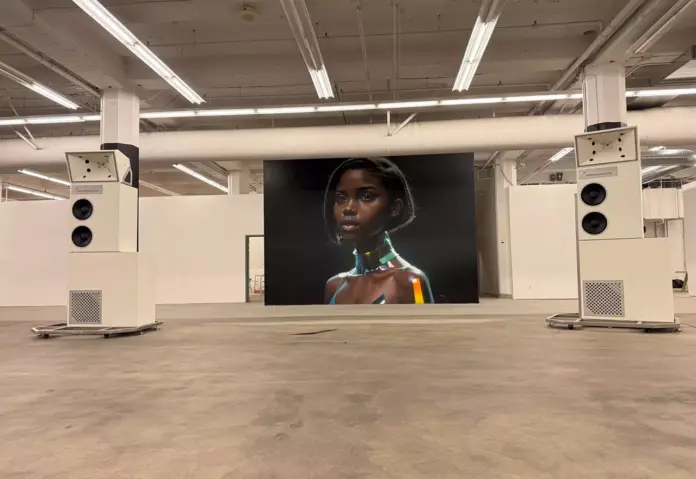This post was originally published on this site
There are sparks of a renaissance happening in Seattle’s downtown corridor right now; murals are creeping in, live painting fills the parks, and enterprises like Base Camp Studio, Actualize AiR, and ArtLove Salon have activated empty buildings. The newest addition to the community is the city’s biggest contemporary arts center, Cannonball Arts.
When I toured Cannonball late last week, much of the paint was still wet. In fact, some walls were still being rolled as I strolled through the massive 66,000-square-foot, two-story building at 1930 Third Avenue.
Though the facade has been updated with oversized signage announcing the venue’s new name, the spectre of a Bed Bath & Beyond sign (the home-goods store shuttered in 2018) still remains affixed to the corner of the building. The site remained vacant until last year, when a handful of visionaries signed a six-year lease with Clise Properties, raised some $3 million of private and corporate funding, loaded out some 30,000 pounds of merchandising racks, and loaded in a lot of art.
It’s the latest project in the portfolio of New Rising Sun, the company responsible for producing Bumbershoot Music & Arts Festival. As an extension of Bumbershoot, Cannonball will serve the festival’s arts and cultural programming year-round in the new brick-and-mortar space.
Seattle has always lacked a contemporary art center on a scale that can house and represent the local scene. Joe Paganelli, CEO of New Rising Sun, and Greg Lundgren, Creative Director, are taking the leap to see if their model of an art space (one not dependent on grants) has legs. The Muckleshoot Indian Tribe is Cannonball’s primary partner and a part owner of New Rising Sun. The second largest contributor is the Ballmer Group, followed by a handful of additional family foundations, as well as corporations such as Starbucks, which has underwritten the production of artwork in Cannonball’s North Gallery.
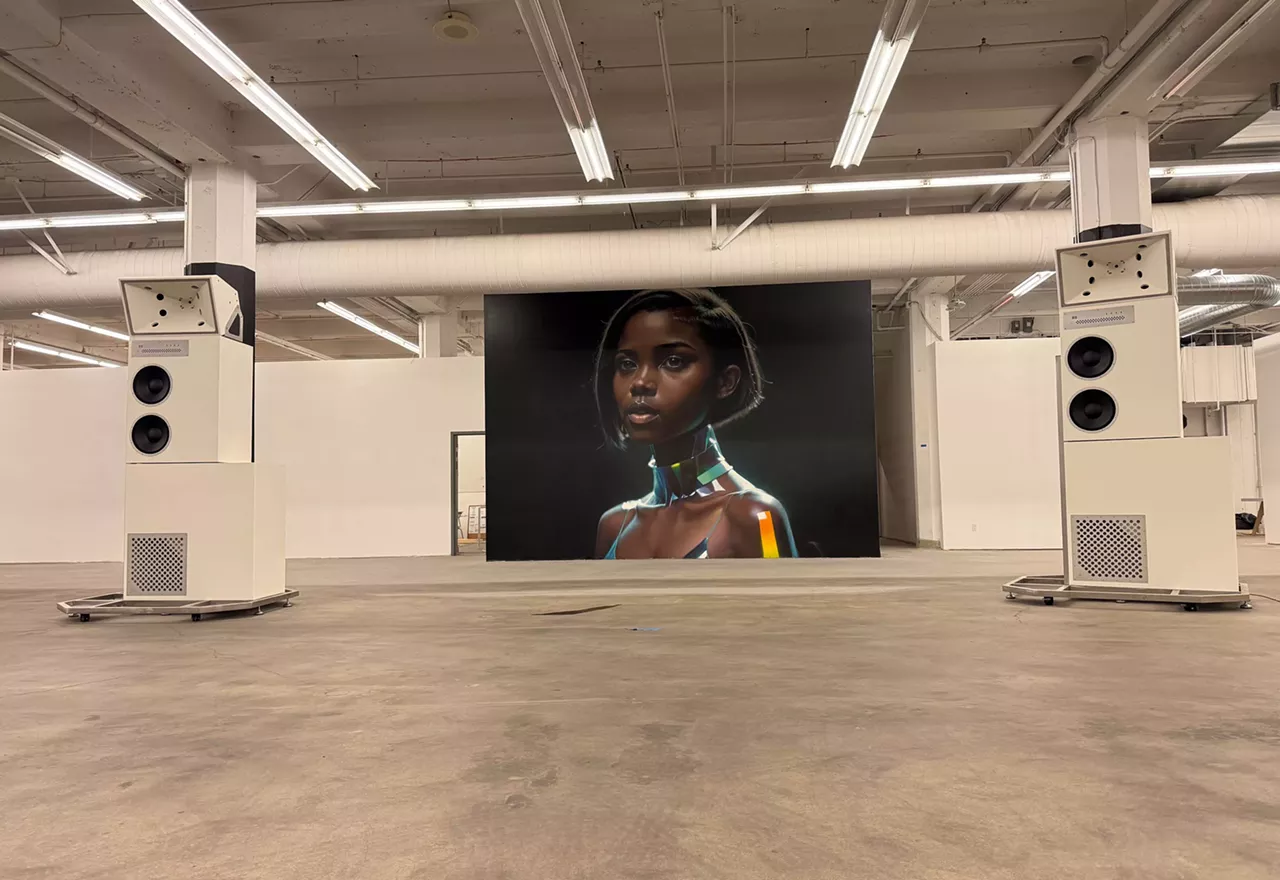
Tomorrow’s opening night celebration promises to roll out the champagne and the skates (New Rising Sun seems to have an affinity for roller skating). DJs Wax Witch, Repoman, and La Mala Noche will be test-driving a brand-new sound system custom-designed by NYC’s House Under Magic founder Danny Taylor, featuring a cardioid subwoofer system and six 12-foot sound towers.
While upper-level Cannonball serves visual art, the music venue portion downstairs might be the sauce that makes the place a destination for an even broader audience. Shows looking to channel London’s early ’90s and 2000s club scene are being organized in partnership with Insomniac and Jason Lajeunesse, and are anticipated to start up in October.
But let’s talk about the art.
Over the past six months, Cannonball put out 20 open calls for art and they received more than 900 proposals in return. While not all the art on view in Cannonball’s inaugural phase is local, the majority of it is.
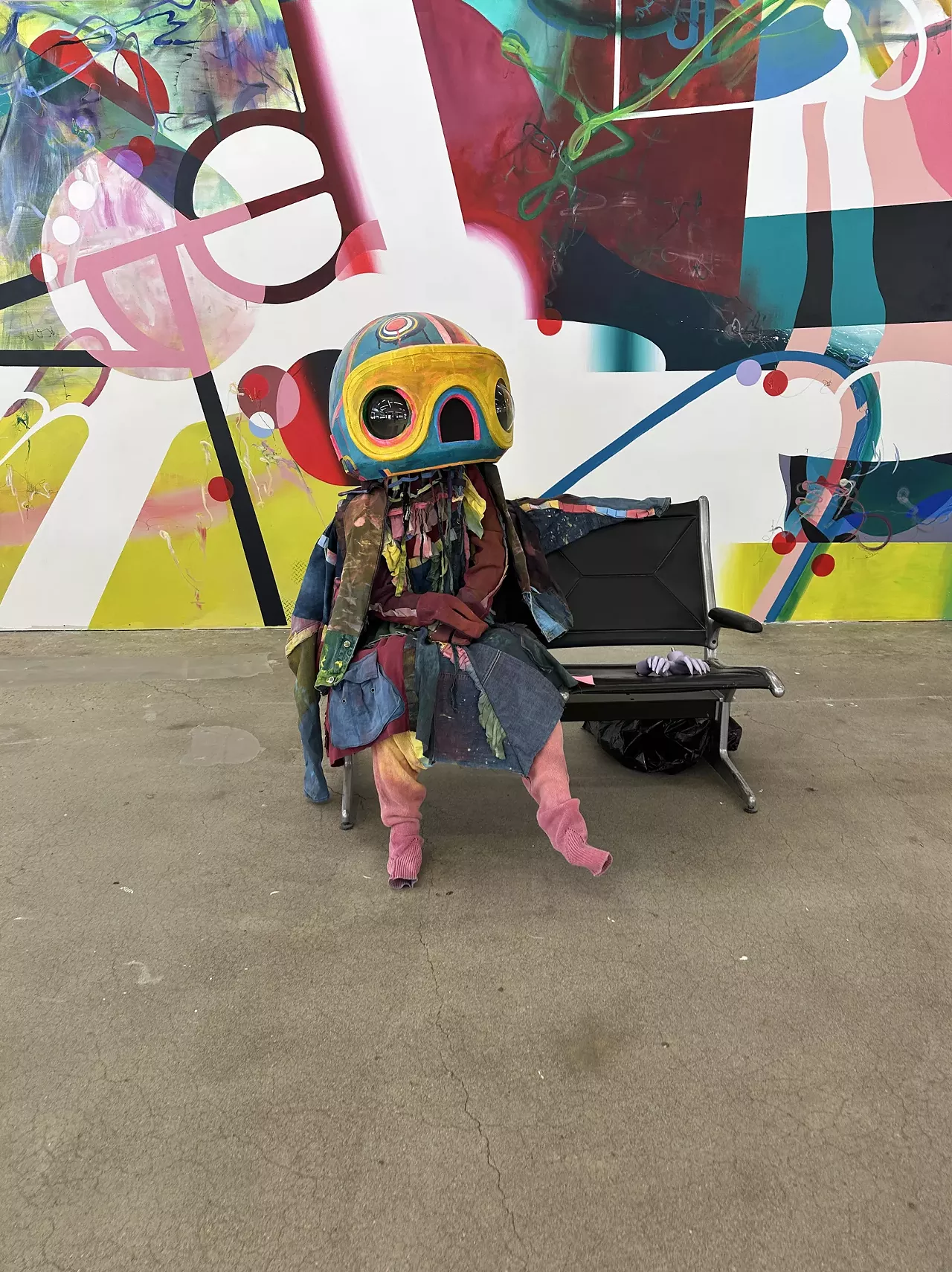
Upon entering the lobby through the sliding glass doors, visitors are greeted by two expansive indoor murals: on the left-hand side, a wall transformed by painter Soo Hong, whose dreamy abstract washes of color and tangling marks weave in and out of clusters and melt into sorbet-tinted clouds. The adjacent wall is rendered stark red by the Náakw Dancers Muralists, its surface inked with black-and-white line drawings of figures inspired by Tlingit iconography. The murals will cycle out regularly, offering space to a new round of artists. During the first six months of programming, the lobby’s centerpiece is a whopping four-ton cedar log that’s been brought in from Muckleshoot-owned land, which will be carved by Indigenous artists into a traditional dugout canoe.
A single, high-walled corridor leading out from the lobby serves as a traditional gallery—a rotating collection of paintings and sculpture by contemporary PNW painters and sculptors. From there, Cannonball unravels into the unconventional, offering a choose-your-own-adventure journey through an array of eclectic art experiences.
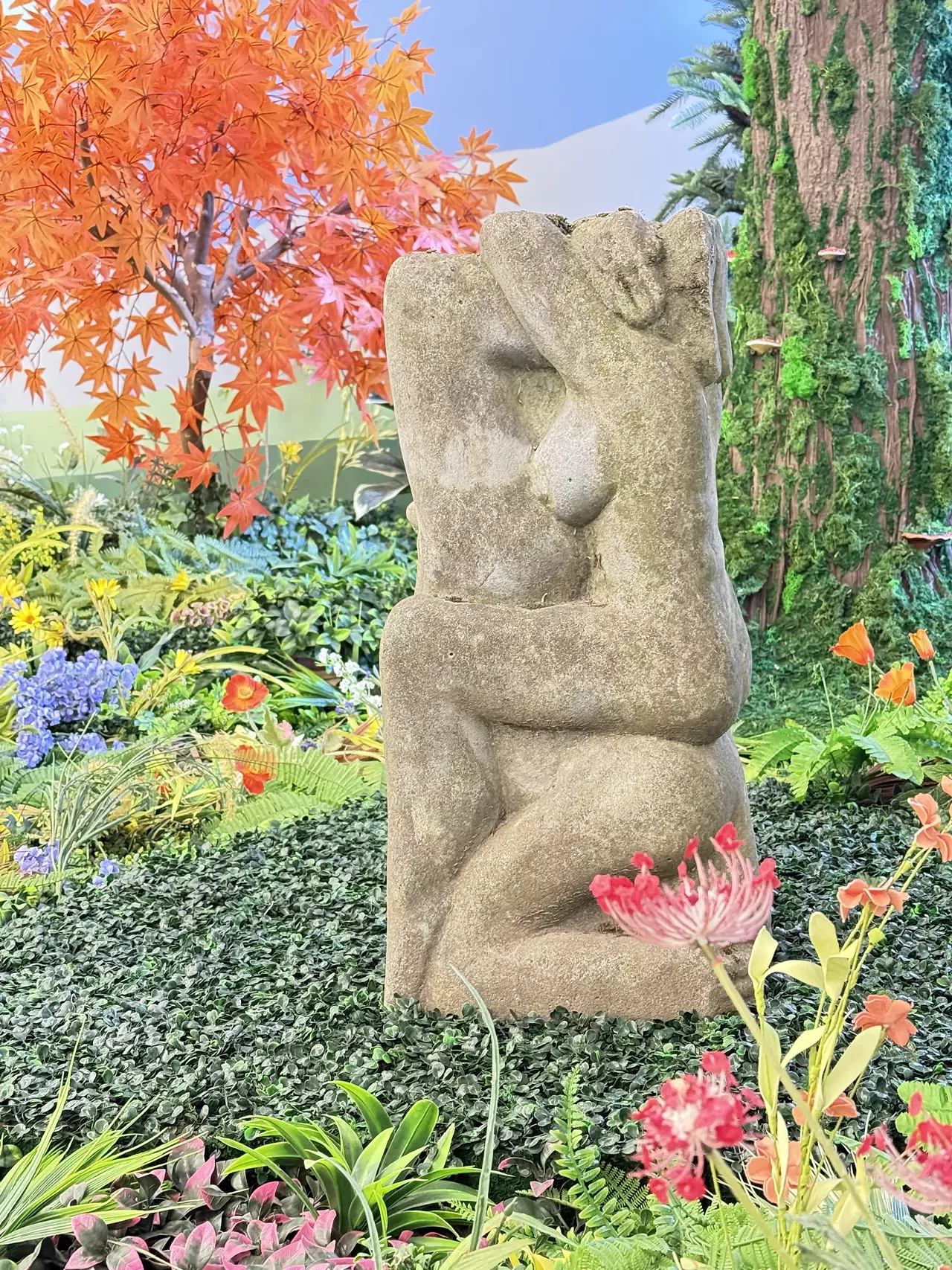
Like the 2,200-square-foot indoor/outdoor sculpture garden, named Virginia Park after the street visible below. Nestled among the polyester petals and polyethylene fronds are a series of carved cement sculptures by Ken Patecky, an 87-year-old Portland-based artist who passed away earlier this month. These pieces alone are worth the price of admission: Brutalist human bodies locked in cryptic, tender tangles of limbs and sensual brick-like knots; some are blushingly erotic, if you look close, with heads in asses and hands dissolving into cracks.
Around a bend in the park path, an oversized neon sculpture by Kelsey Fernkopf scatters blue glow onto the foliage, which concludes with an indoor campfire designed by local sculptor W. Scott Trimble. The sound of crackling emits from a speaker buried under real logs, augmented by the chirp of electronic crickets hidden in the grass. It’s intended to be a stage for intimate, randomized human interaction—one of the things Lundgren and Paganelli hope to elicit throughout the venue. (Cannonball is soliciting volunteer “camp counselors” to tend the firepit and facilitate conversations between total strangers. Those with a performative bent are encouraged to apply within.)
There’s a lot of aspirational ethos and intention woven through Cannonball. One thing Cannonball aims not to be is stuffy, but rather, an intimidation-free zone where “Don’t touch the art” is only occasionally enforced. In place of security guards, there will be volunteers perched atop a 10-foot lifeguard chair towering in the center of the upper level; instead of barking at visitors for getting too close to certain artworks, the lifeguard will whistle and banter, Baywatch-style.
One artwork visitors are kindly asked not to touch is Casey Curran’s Leviathan, a breathtaking sculpture in the shape of a fallen whale suspended midair in Cannonball’s North Gallery. Like all of Curran’s kinetic pieces, this one is gently animated, its movements powered by mechanical apparatus lacing throughout the spine and ribs. When activated, the wire frame and “flesh” made of diaphanous white fabric flutters as though stirred by the whisper of a current at the bottom of the sea. The body of a fallen whale becomes an ecosystem of its own, not unlike the second life of a nurse log. Inside the belly of Leviathan, a smaller creature feeds and flutters.
In the shadow of Leviathan, there’s a life-drawing stage ringed with drawing benches and carts full of pencils. Also luring visitors to participate in the making of art, the inaugural exhibit in the South Gallery, Mirror Mirror, is an “audience-generated photography competition” that aims to turn the run-of-the-mill, selfie-friendly, immersive environment on its head by inviting visitors to go all-out in orchestrating elaborate self-portraits with the aid of a 6′ x 6′ mirror. Designed as an ego-tickling way to teach the audience about conceptual art, they’re hoping visitors will bring props, costumes, and glam teams and run with it. The oversize selfie station is surrounded by walls hung with 12 large monitors that will broadcast a selection of the best of selfies created onsite and submitted for consideration. The competition part comes in the form of $18,000 worth of prize money dispersed to winners weekly in $500 increments.
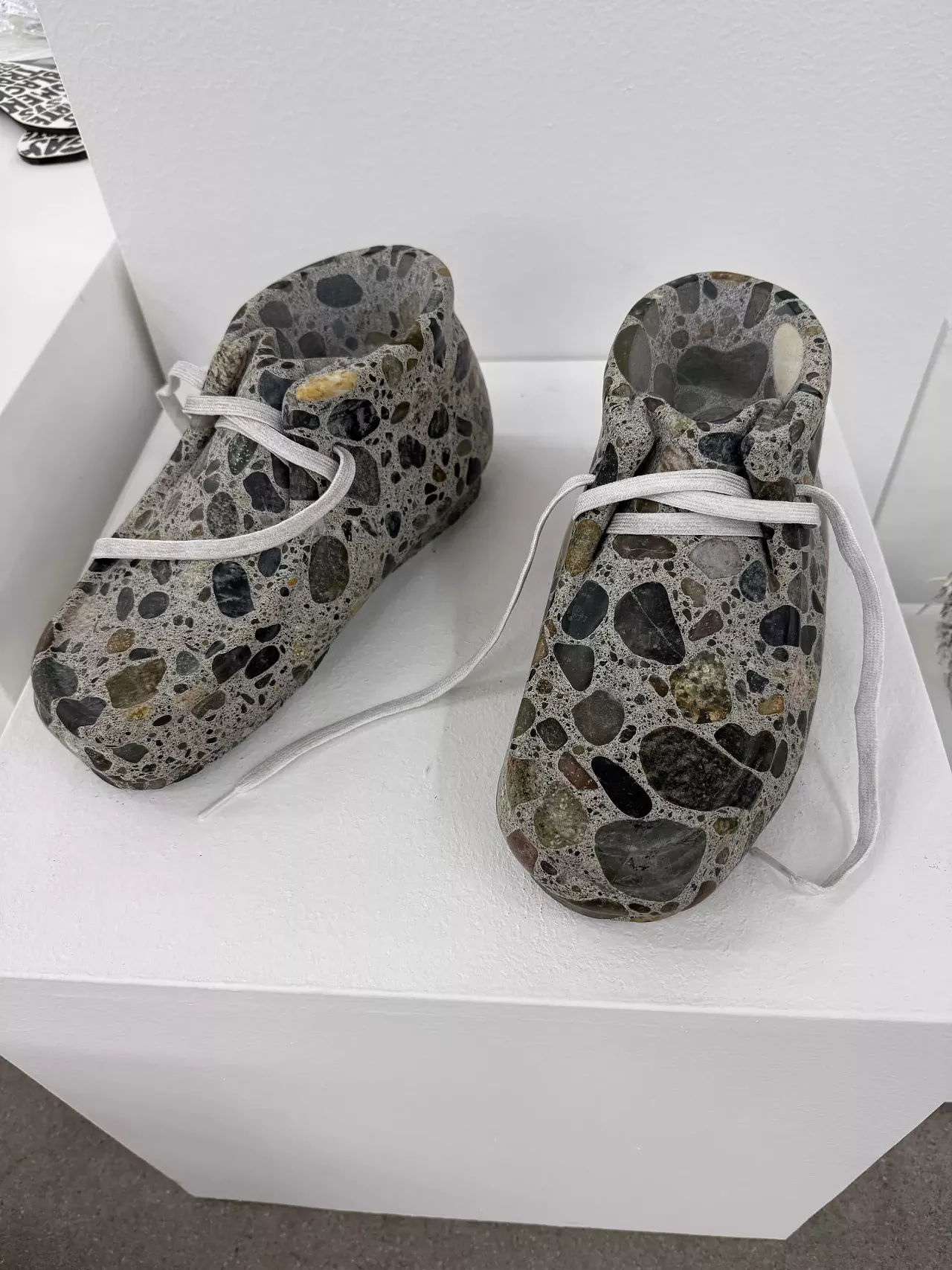
The ghost of the building’s retail past is summoned occasionally, referenced in a collection of non-functional, artist-designed sneakers made of cement, wood, and ceramics, all arranged on plinths (and for sale). A call for artists to reimagine the humble mini-fridge has resulted in a bizarre, if charming, collection of altered electronics. One wall covered in a grid of monitors harkens to department store TV displays—only these feature a selection of video art.
Other moments lean into the carnival of it all—another tie-in with Bumbershoot. Brent Watanabe’s Monster is an actual modified amusement park kiddie ride refitted with VR headsets to offer a virtual dark ride experience at 1 mile per hour. Another ride, California-based artist Stephanie Metz’s Toxic Beauty, answered the call for an artist to breathe new life into the bones of a mechanical bull by creating a “ridable soft sculpture.” The result is Metz’s 10-foot-long Hopkin’s rose nudibranch—a sea slug with an ostentatious amount of pink flair, whose coloration comes from feeding on poisonous, rose-colored coral (which in turn endows the creature with the ability to squirt toxic secretions from its undulous horns).
There are dozens of other things that beg reporting. Ben Zamora’s room-sized light sculpture made of 200 fluorescent white tubes that glow like a labyrinth frozen in space. Or the rows of artist-designed bathroom stalls, including one that might be the world’s largest Lite-Brite installation, and another that’s a shrine to Kurt Cobain.
We’ll see if Cannonball makes lasting waves and shifts the narrative about downtown as a vibrant art destination—or proves that audiences are hungry for altered-mini-fridge art.
But in its aim to bridge the gulf between institutional museums and immersive art experiences like Museum of Ice Cream or Meow Wolf, Cannonball may have found their Goldilocks moment—where elements of a hyper-sensory funhouse meet meaningful interaction with thoughtful art.
Cannonball’s grand opening on Friday, August 15 is sold out. The gallery begins regular hours on August 21. Tickets available at cannonballarts.com.












